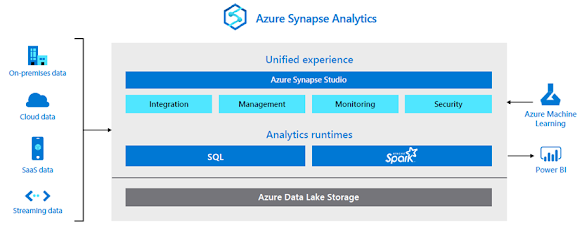Adopting to MS Teams – Pressing Questions
If you’re in a company that already uses Office 365, or in a company who’s been considering using Office 365, I’m guessing that Microsoft Teams is a topic that has come up often.
And no matter what your
industry or company size, we know you likely have all
sorts of questions about Microsoft Teams and some of the underlying
technologies found in Office 365.
Below are some of the most common Teams
questions.
Introduction
MS Teams
Microsoft Teams is a workspace, or a
“collaboration hub” as many refer to these workspaces, found within Office 365
that provides real-time collaboration, communication, virtual
meetings using audio and video functionality, and file sharing,
all within a single application.
It enables cross-organization groups to
easily create and use these workspaces in an intuitive manner, placing the most
common collaboration and communication functions at everyone’s
fingertips.
Concerns
about MS Teams
Over the years
I’ve concluded that Microsoft Teams is a game-changer for
companies wanting to increase their collaboration and employee engagement in
order to increase their productivity across the board.
Microsoft Teams is now
approaching its third-year anniversary from when Microsoft originally
announced its release and the increase in usage over that time has
been simply astonishing. So what are the reasons for this growth?
Current Office 365 users
get Teams at no additional cost and its wide array of
capabilities such as: 1:1 or 1:Many conversations and video;
team-specific configurations via tabs and channels; in-context co-authoring of
documents; tight integration with SharePoint, OneDrive, and OneNote; and
enterprise voice and calling capabilities.
It’s a game-changer for companies wanting
to increase their collaboration and employee engagement and
its fairly simple to do. A Team or workspace can be quickly
created for different groups who want to communicate and collaborate in a
secure, protected, mobile-friendly, and intuitive manner, with little IT overhead.
In conjunction with the other Office 365 applications, Teams has
proven to truly change the way companies and organizations work
– finally we have an application that is transforming the digital workspace by
giving the average employee a way to engage with others as they and the organization as
a whole dramatically increases their productivity and effectiveness.
It's not simple as it sounds
No, sorry. Teams does come
with its challenges.
The caveat is that Microsoft Teams is far
from perfect and if turned on and simply left to grow organically, many
people and organizations will gradually become frustrated due to the
rapid growth in the number of teams being created across the
organization, lack of understanding of its use, and a high level of risk
to company information.
The good news is, most of these challenges
can be overcome through implementing best practices & governance, a
well-defined governance structure, designing and implementing user adoption
plans that are aligned to the organization’s culture and business objectives,
and providing high-quality end user education on a recurring
basis.
MS Teams user adaption discussion
First, let’s define the term Adoption by
using Microsoft’s definition of “Service Adoption:” the ability of an
organization to drive healthy usage of the business and technical capabilities
that are delivered to employees.
Healthy usage refers to the ability for
employees to use these capabilities to deliver business outcomes in their
organization. Essential to this goal is the focus on the employee experience
and their digital literacy with the relevant tools and processes that are
delivered in combination by business and IT leaders.
Teams has the potential for broad
organizational impact which is why adoption of
Teams should be deliberate and involve
many stakeholders. This often includes IT staff, senior business
leaders, HR, and end users who are all eager to
learn how to best use Teams in the organization but
probably have different levels of knowledge and
perspectives on its capabilities.
Skype
for business roadmap
Microsoft Teams is replacing Skype for
Business. If your organization uses Skype for Business you
should begin planning right away.
Skype and Teams can coexist for
some time however some customers are set to
automatically be upgraded by Microsoft. The technical side of the
upgrade is only one part of the equation.
The second part?
This upgrade will impact your business
users significantly and with all the features that come along with Teams
it will change the way they work – change management, governance and
training should be addressed before you upgrade. We are happy to
guide you through this process.
MS Teams worries
Some users have told me to just turn it on
and let it grow organically.
Based on our experience, without governance,
we can almost guarantee a combination of several negative consequences that
your organization will face, to include:
Confusion and frustration – rapid and
uncontrolled growth in teams resulting in difficulty in finding information, difficulty
in finding teams relevant to different users, Teams that have duplicate
purposes, conflicting guidance to users of when to use Teams vs. Groups vs.
Email vs. SharePoint, etc.
Risk to sensitive information –
Unintended information leaks to external guests, storing information that
violates company compliance requirements, retaining / removing information that
violates company record retention policies, and potential threats that gain
access to the entire platform through phishing and malware attacks.
Low user adoption – Without a training
plan for administrators, managers, and end users hasn’t been designed and
resourced, user adoption decreases, the organization’s ROI will be
significantly lower since people won’t know how to use a platform that they’ve
invested in. Users will also not trust the environment, thus decreasing
their overall acceptance and usage.
Ultimately, every organization needs a
governance plan that is provides a balanced approach to operations that
supports healthy growth of its usage that maximizes adoption and minimizes
risks.
If
you are interested in MS Teams or SharePoint related solutions then, please
contact Prometix – enquires@prometix.com.au


Comments
Post a Comment